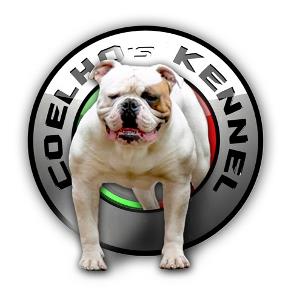
|
Until the 1600s the name "Bulldog" was actually a term describing the job a dog did rather than it's breed. Early in written history there were dogs described as "Pugnances", large brown and brindle dogs that had the ability to grasp large bovine animals by the snout and bring them to the ground. Many of these large mastiff like dogs were imported to the British Isles from the East and used as bulldogs.
During the reign of the Roman Empire, some of these mastiffs had been trained to pull down horse and horseman during a battle. Some of these large British Mastiffs were brought back to Rome to fight in the arena. In Germany, the imported mastiffs from the East were referred to as Bullenbeissers or Bull biters. These Bullenbeissers were the predecessors of today's Boxer. The larger mastiffs became what is now the Great Dane or as it is known in Germany today, the German Mastiff.
The Bulldog was used for many different purposes besides catching bulls and boar. Baiting contests were not uncommon between dog and bear, or dog and lion. Stories have been told of as few as 2 or 3 Bulldogs in the 40-60 pound range taking on a lion or bear in the arena. Depending on the type of work or sport which the Bulldog did his size varied anywhere between 40 and 100 pounds. This explains why throughout history different people have described the Bulldog so differently. It did not matter what breed the dog was or what he looked like as long as he could get the job done. The livestock of that time looked much different than they do today. The cattle were slightly smaller and quicker with large horns for defense. Any dog that could take one of these down had to be very brave and strong with great endurance in order to chase down the bull first and then bring it to the ground. These Bulldogs were usually white with some brindle or fawn coloring, were very athletic and muscular with a short muzzle, almost exactly like the American Bulldog of today. Pictures of Bulldogs throughout history have shown this to be true.
A majority of the old English working bulldogs were brought to the new world with the colonists. Typically these colonists and their Bulldogs came through the seaports of Savannah and Charleston and settled in the southern colonies. Here the old English working Bulldog thrived and helped build the old south. These Bulldogs were used as utility farm dogs, catching livestock, protecting the farm from the ever present wolves and many other intruders. These Bulldogs still had to be fast enough to catch and hold cattle and wild boar and big and strong enough to defeat wolves, bears, coyotes, and mountain lions. They were required to do all of these jobs without question and without fear. It is no wonder that the American Bulldog is so loyal, and courageous.
Since the 1600s, the newly imported Bulldog was used as a working Bulldog in the rural areas of Georgia, Alabama, Florida, Tennessee, and the Carolinas. The working Bulldog, which had arrived from England, was typically smaller than the American Bulldogs of today. Back then they were between 60-100 pounds (27-45 kg.) with some variation, muzzles were also slightly longer (3"-4") which allowed them to breathe easier and also enabled better endurance while working in the deep south as well as giving them a stronger bite. Smaller Bulldogs were more athletic, with greater endurance and agility. Back then American Bulldogs were known by several names including White English, Old English Whites, Old Country Bulldogs, Old Southern Whites, Alabama Bulldogs, Georgia Giants and American Pit Bulldogs.
During the past few hundred years, these Bulldogs have retained the same characteristics but steadily declined in numbers until the 1960s when a collaborative effort was made to secure the last few Bulldogs and increase their numbers via an intensive breeding program. The men who accomplished this were John D. Johnson, Alan Scott, JM Ashley, Louis Hegwood, George Lee Williamson, WC Bailey, and Calvin Tuck. In 1970, John D. Johnson and Alan Scott first registered the American Pit Bulldog with the NKC, and later renamed it to the American Bulldog to avoid confusion with the American Pit Bull Terrier. In 1970, most American Bulldogs looked alike, very much like the standard type American Bulldog of today. Johnson's Dick the Bruiser and Scott's Mac the Masher were the foundation dogs of the Johnson and Scott modern American Bulldog breeding lines. These two dogs were Old Southern Whites (aka White English, Old English Whites, Old Country Bulldogs and Alabama Bulldogs), which came from Alabama. It has been said that Mr. Johnson actually found Dick the Bruiser on a porch in Alabama. Mr. Scott actually bought Mac the Masher from JM Ashley who also lived in Alabama.
In the 70s, Mr. Johnson and Mr. Scott had a falling out and discontinued breeding with each other's dogs. This eventually created two very distinct breeding lines of American Bulldog, the Johnson type (aka Bully type) and the Scott type (aka Standard type). During this same time other American Bulldog breeders continued to breed the Old Southern Whites, oblivious to the popularity of Mr. Johnson and Mr. Scott and their American Bulldogs. Old Southern Whites happen to be similar to Mr. Scott's breeding lines because like Scott dogs, they have been bred to maintain the working ability whereas Mr. Johnson has been breeding larger bulldogs for personal protection work.
American Bulldogs can be friendly in daytime, but aggressive at night especially with strangers. They are eager, bold and confident with no signs of fear or timidity. The American Bulldog is alert and always aware of its surroundings. They are courageous enough to fight a wild boar but gentle enough for a house pet.
American Bulldogs are very dominant animals and aggression toward other dogs is not uncommon. Above all the American Bulldog is a loyal companion, never showing any aggression towards its owner.
The American Bulldog is a short-coated, muscular and athletic animal. It displays strength, endurance and a gility without excessive bulk. The American Bulldog is tall, however the body is just slightly longer than tall. White or white with patches of brindle or fawn are the most common colors.
This also means that the American Bulldog is a good guard dog. In fact this is one of its primary jobs over the past 300 years. American Bulldogs were used to protect livestock from unwanted invaders such as wolves, coyotes, bears, mountain lions, and poachers. Although the American Bulldog is a great guard dog, it's main use was as that of a farm utility dog. Its other uses were that of a catch dog (especially cattle and wild boar), a weight puller (plows in the field and carts to market) and unfortunately also as a dog fighter. Above all the American Bulldog has always been an excellent family companion!
GENERAL APPEARANCE: SIZE & WEIGHT: HEAD: MUZZLE: BITE: EYES: EARS: NECK: COAT: COLOR: FOREQUARTERS: HINDQUARTERS: |
|
Tributo a John d. Johnson e à sua esposa Milred Johnson |
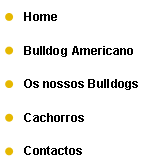
|
Respected visitor, welcome to my site of the Race American Bulldog.
My taste for dogs accompanies me since young age. The dog was always an essential element in my family, the moments of pleasure and harmony that they provide us are gratifying and incomparable.
I think that my honesty and professionalism in dog breeding has been crucial in the national and international recognition that i have been taking credit for as per what my clients and their vets say and think, 55 % of the dogs that I breed are spread around the world.
My breeding purpose is ambitious, being based and structured in healthy and animals descending of the best reproducers of the world. Quality is my works benchmark.
In this site you will be able to see a summary of the history of the race, standard, my Bulldogs, available dogs, contacts and reservations.
I hope you enjoy.
Paulo Coelho |


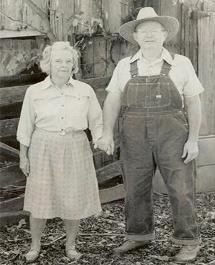
|
John D. Johnson e sua esposa Mildred L. Johnson
|
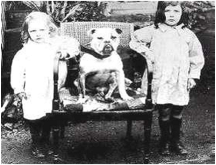
|
Foto tirada no Ano de 1880 nos Estados Unidos Nos dias hoje á varias linhas que se mantém iguais ao American Bulldog da Foto. |
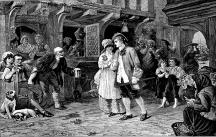
|
Representação de Bulldogs nas ruas de Inglaterra |
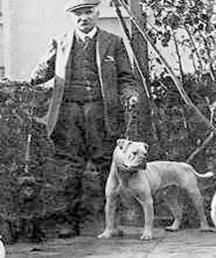
|
Bulldog no ano de 1910 |
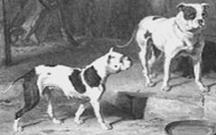
|
Bulldogs século XVII |
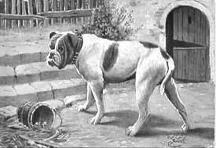
|
COELHOS BIG BOSS 1 |
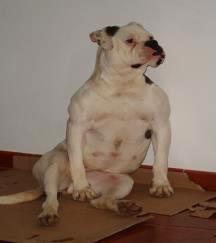
|
Vista lateral da cabeça (Chula coelho´s kennel) |

|
Snowflake de coelhos kennel |

|
BIG BOSS OF COELHOS KENNEL |
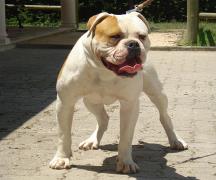
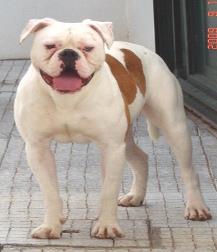
|
COELHO´S SNOWFLAKE 1 |
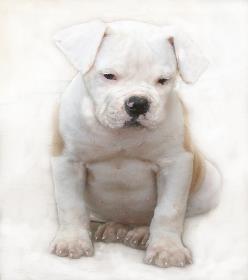
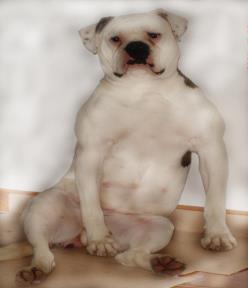
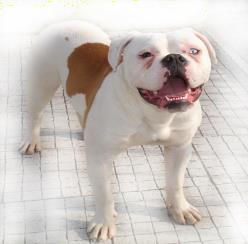
|
Big Boss de Paulo Coelho |
|
Chula de Paulo Coelho |
|
Snowflake de Paulo Coelho |
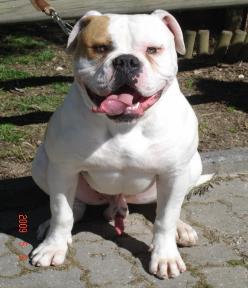
|
COELHO´S Ice 1 8 Monts
|
|
COELHO´S ZORRO 1 |
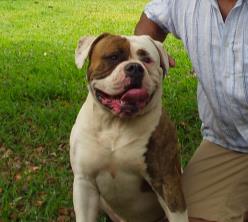
|
www.bulldogsamericanos.com |
|
www.coelhoskennel.com |
|
www.bulldogamericano.pt |
|
We are making reservations for next litter. Look the Pedigrees in Our Dogs Area |